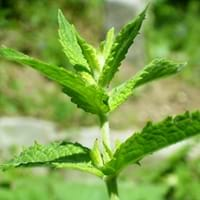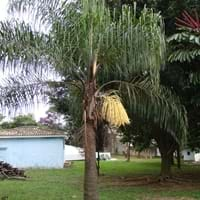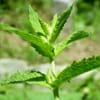Life Span
Perennial
Annual
Origin
Europe, Mediterranean
South America, Argentina, Brazil
Types
Not Available
Not Available
Habitat
Temperate Regions
Forest edges
USDA Hardiness Zone
3-7
7-15
Sunset Zone
1a, 1b, 2a, 2b, 3a, 3b, 4, 5, 6, 7, 8, 9, 10, 11, 12, 13, 14, 15, 16, 17, 18, 19, 20, 21, 22, 23, 24
H1, H2, 12, 13, 15, 16, 17, 19, 20, 21, 22, 23
Habit
Spreading
Upright/Erect
Flower Color
Pink, Lavender
White, Ivory
Flower Color Modifier
Bicolor
Bicolor
Fruit Color
Not Available
Orange
Leaf Color in Spring
Green
Dark Green
Leaf Color in Summer
Green
Dark Green
Leaf Color in Fall
Green
Dark Green
Leaf Color in Winter
Light Green
Dark Green
Leaf Shape
Oval with toothed margin
Long Linear
Plant Season
Not Available
Spring, Summer, Fall, Winter
Sunlight
Full Sun, Partial Sun
Full Sun, Partial Sun
Growth Rate
Very Fast
Very Fast
Type of Soil
Clay, Loam, Sand
Loam, Sand
The pH of Soil
Acidic, Neutral, Alkaline
Acidic, Neutral
Soil Drainage
Well drained
Well drained
Bloom Time
Early Summer, Summer, Late Summer
Summer
Tolerances
Drought
Wet Site
Where to Plant?
Container, Ground
Ground
How to Plant?
Seedlings, Stem Cutting
Seedlings, Transplanting
Plant Maintenance
Medium
Medium
Watering Requirements
Average Water Needs, Do Not over Water
Does not require lot of watering, Use and maintain water-efficient soaker hoses, Use Mulches to help prevent water loss during hot and windy weather, Water in morning to avoid prompting diseases, Water twice a day in the initial period
In Summer
Lots of watering
Lots of watering
In Spring
Moderate
Moderate
In Winter
Average Water
Average Water
Soil pH
Acidic, Neutral, Alkaline
Acidic, Neutral
Soil Type
Clay, Loam, Sand
Loam, Sand
Soil Drainage Capacity
Well drained
Well drained
Sun Exposure
Full Sun, Partial Sun
Full Sun, Partial Sun
Pruning
Remove damaged leaves, Remove dead branches, Remove dead leaves
Cut or pinch the stems, Prune for shortening long shoots, Remove dead or diseased plant parts
Fertilizers
All-Purpose Liquid Fertilizer
All-Purpose Liquid Fertilizer, Fertilize before watering, fertilize in growing season
Pests and Diseases
Aphids, Red blotch, Spider mites, Whiteflies
Fungal Diseases
Plant Tolerance
Drought
Wet Site
Flower Petal Number
Single
Single
Fragrant Bark/Stem
Yes
No
Foliage Texture
Medium
Bold
Foliage Sheen
Glossy
Glossy
Invasive
Sometimes
Sometimes
Attracts
Aphids, Flies, Mites
Birds
Allergy
bullous cheilitis, contact allergic dermatitis
Asthma
Aesthetic Uses
Not Used For Aesthetic Purpose
Not Used For Aesthetic Purpose
Beauty Benefits
Not Available
Not Available
Environmental Uses
Air purification
Air purification
Medicinal Uses
Antifungal, Arthritis, Digestive disorders, Stomach pain
No Medicinal Use
Part of Plant Used
Leaves
Fruits, Leaves
Other Uses
Food for animals, Used as a nutritious food item, Used as insect repellent, Used for its medicinal properties, Used in making beverages
Cattle Fodder
Used As Indoor Plant
Yes
No
Used As Outdoor Plant
Yes
Yes
Garden Design
Container, Edible, Herb / Vegetable
Feature Plant, Street Trees, Tropical
Botanical Name
MENTHA spicata
SYAGRUS romanzoffiana
Common Name
Spearmint
Queen Palm
In Hindi
पहाड़ी पुदीना
queen palm
In German
Grüne Minze
Königin palme
In French
menthe verte
reine palme
In Spanish
menta verde
palma reina
In Greek
δυόσμος
βασίλισσα φοίνικες
In Portuguese
hortelã
palm rainha
In Polish
mięta
królowa palmowy
In Latin
Coriander
regina palmarum
Phylum
Magnoliophyta
Tracheophyta
Class
Magnoliopsida
Liliopsida
Family
Lamiaceae
Arecaceae
Clade
Angiosperms, Asterids, Eudicots
Angiosperms, Commelinids, Monocots
Subfamily
Not Available
Arecoideae
Number of Species
Not Available
Importance of Spearmint and Queen Palm
Want to have the most appropriate plant for your garden? You might want to know the importance of Spearmint and Queen Palm. Basically, these two plants vary in many aspects. Compare Spearmint and Queen Palm as they differ in many characteristics such as their life, care, benefits, facts, etc. Every gardener must at least have the slightest clue about the plants he wants to plant in his garden. Compare their benefits, which differ in many ways like facts and uses. The medicinal use of Spearmint is Antifungal, Arthritis, Digestive disorders and Stomach pain whereas of Queen Palm is No Medicinal Use. Spearmint has beauty benefits as follows: Not Available while Queen Palm has beauty benefits as follows: Not Available.
Compare Facts of Spearmint vs Queen Palm
How to choose the best garden plant for your garden depending upon its facts? Here garden plant comparison will help you to solve this query. Compare the facts of Spearmint vs Queen Palm and know which one to choose. As garden plants have benefits and other uses, allergy is also a major drawback of plants for some people. Allergic reactions of Spearmint are bullous cheilitis and contact allergic dermatitis whereas of Queen Palm have Asthma respectively. Having a fruit bearing plant in your garden can be a plus point of your garden. Spearmint has no showy fruits and Queen Palm has showy fruits. Also Spearmint is not flowering and Queen Palm is not flowering . You can compare Spearmint and Queen Palm facts and facts of other plants too.





